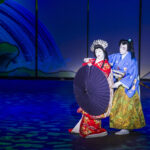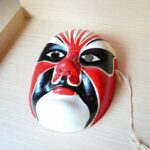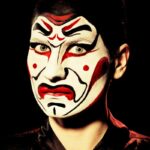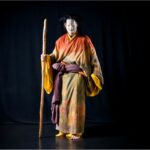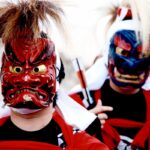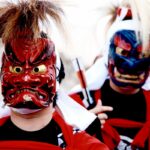Are you just learning about kabuki and all the nuances that make this Japanese art form the much beloved treasure it has become known for?
If you are then you likely have heard of the term ‘Hanamichi’ thrown around and wondered what it could possibly mean.
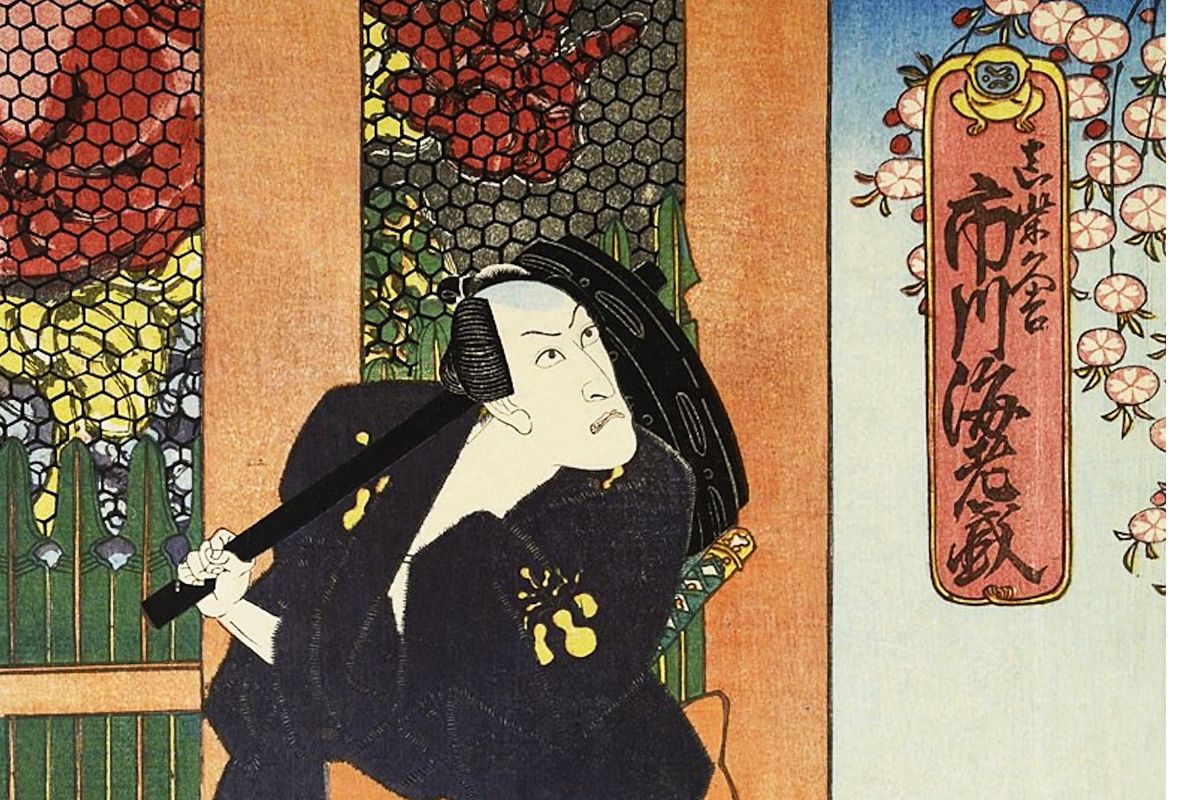
In short the hanamichi is simply the name for a walkway which goes through the audience.
It is used as a means for the actors to make an entrance or exit as well as serving as somewhere to portray a road, river or other scenes. It has become a staple of kabuki.
But there is far more to this ancient bit of kabuki stage design. That is why we have written this article. So that you can learn everything you need to know about kabuki stage design and the hanamichi.
With all of that said, let us finally dive right in and get started!
Let’s Talk About The Hanamichi Or Flowered Path
There is not much solid information on how the hanamichi or flowered path came to be. There are several theories on how this walkway became a staple of kabuki.
One of the most compelling theories is that it was first constructed by the Noh Theater. Ever since then it has become a staple of the kabuki theater.
When this theater was first made it was not meant to be a permanent part of the stage. Instead, it was supposed to be transitory.
The name hanamichi is said to have come from the fact that when actors walked down this path, the audience would give them flowers and leave them on this walkway.
Before the hanamichi was used there was something called the hashigakari. This part of the stage was used as a means for the actors to make their entrance or exit of the stage.
However, it was not as effective as the hanamichi as the position of the hashigakari made it difficult for the audience to see the actors entering or exiting the stage.
Because of this issue, the hashigakari was eventually transposed into a ninety-degree angle shape and that is where the hanamichi eventually came from.
As time went on the hanamichi evolved. While it started out as a simple pathway for the actors to move though the audience. It was initially just a temporary structure.
Eventually it actually became a permanent part of the stage. This new fixture of kabuki not only served a practical purpose it also helped the audience and actors to build a relationship.
But kabuki scripts now use the hanamichi for more than simply an actor’s entrance or exit. No, they are now used for more important aspects of a script.
For example these walkways will be used for more intimate or specific scenes. In the script itself it may say that an actor should walk to the center of the hanamichi and deliver the speech.
The reasons for something like this may be because it allows the actor to be closer to the audience which allows them to become more enraptured in the scene that is being performed.
But aside from that, the hanamichi can also be used as a way for the performer and the character to strengthen their relationship. While this walkway was originally used simply for exiting or entering a stage.
It quickly became something that was used to enhance particular lines. This walkway was ideal as an area for prioritized acting to be performed. It allowed the audience to be close to the action and really focus on what was being said and by whom.
Kabuki Stage Mechanisms
The stages for kabuki are far more complicated than meets the eye. Besides the hanamichi, there are several mechanisms and components which make up these stages.
In this section we are going to briefly go over a series of these parts of the kabuki stage. So, without further ado, let us dive right in and get started!
Revolving Stage Or Mawaributai
This part of the stage is essentially a central device which rotates the floor on stage. This makes it possible for scenes to be changed quickly during a performance.
Stage Elevator Or Seri
This part of the stage is essentially an elevator mechanism which is used to raise or lower certain ports of the kabuki theater stage.
Below-Stage Basement Or Naraku
This area of the stage will be located under the main stage and hanamichi. It is here that there are many mechanisms installed. The name ‘Naraku’ literally translates to the word ‘Hell’.
This comes from the fact that everything beneath the stage was moved using human power. Obviously it was unpleasant there. Thus, the fond name Naraku or hell.
Musician’s Room Or Kuromisu
This part of the stage is essentially a small room on the shimote side of the theater which is used for musical performances. Usually there are also black blinds attached to the windows.
Narrator’s Floor Or Yuka
This part of the stage is in reference to an area where the narration is performed for the kabuki play (see also ‘An In-Depth Exploration Of The 3 Types Of Kabuki Plays‘). Usually there is a blind which is suspended from this part of the stage.
When narration is performed when the curtain or blind rolled up it is called ‘Degatari’. On the other hand, narration which is performed when the curtain or blind down which is known as ‘Misu-Uchi’.
Regular Stage Curtain Or Joshiki-Maku
This part of the kabuki stage is most often used as a way to conclude the scenes of the play.
For example when the famous striking of the wooden clappers is heard in a quickened beat there will be seen shifters on hand who will draw the curtain from right to left.
By opening or closing the curtains, this part of the stage can be used as a way to stage. The word ‘Joshiki’ is a word that literally means ‘Regularly Used’ which is apt as these curtains are in fact used frequently.
Flowered Walkway Or Hanamichi
This part of a kabuki stage is essentially a large walkway which goes from the shimote through the audience and finally to the back of the back of the theater.
This walkway can be used in many different ways but how it is used depends on what scene is being performed. For example, it can be used as a corridor, riverbank, sea, road, or another setting.
Usually the actor or actors will come out of a little room behind the audience and walk towards the stage while passing directly through the audience.
This is a great way to create tension for the audience while also allowing them to admire the actor and their costume.
In some very specific plays there may be two hanamichi or walkways. The second one will usually be routed from the kamite side. This will mean that it will be in parallel to the other walkway.
When there are two hanamichi the actors may walk down both walkways and pause to speak to one another from above, which provides the audiences with a wonderful view of the performance.
Small Mechanical Elevator Or Suppon
This part of a kabuki stage is basically a small elevator which has been engineered to raise and lower one part of the hanamichi. This section is located right by the stage.
The suppon is mostly used by actors which are playing specific types of character like the following: Sorcerers, ghosts, goblins, spirits, as well as other similar characters.
When this elevator is used it makes it appear like the character has suddenly and magically appeared out of nowhere.
The name ‘Suppon’ literally translates to ‘Terrapin’.
This name was given to the elevator because it was a little indicative of how a terrapin extends its neck out of their shell.
Entrance Curtain Or Agemaku
This part of the stage is essentially a curtain which is hung starting at the point where the hanamichi stretches out from the stage and stops at a small room which is located behind the audience.
Usually there is the crest of the theater on the curtains which is then attached using metal rings.
Because of these metal rings there will be a clicking sound when the agemaku is opened or shut. This clicking will also happen as actors pass through the curtains.
Final Thoughts
We hope that you have enjoyed reading this article and learning all about hanamichi.
This aspect of kabuki stage design is deep-rooted within Japanese culture. Kabuki today would not be what it is without this part of the stage.
There is a lot more to learn about kabuki and Japanese culture. So, make sure to check out some of our other articles. There is bound to be something that you will find interesting.
We hope that you have fun learning about Japan. Have a great day and goodbye for now!
- 16 Best Websites To Watch Japanese Movies With English Subtitles - May 11, 2023
- Is ZIPAIR The Best Airline For Traveling To Japan? - May 11, 2023
- Ryu Murakami Vs Haruki Murakami – Which One Should You Read? - May 11, 2023


